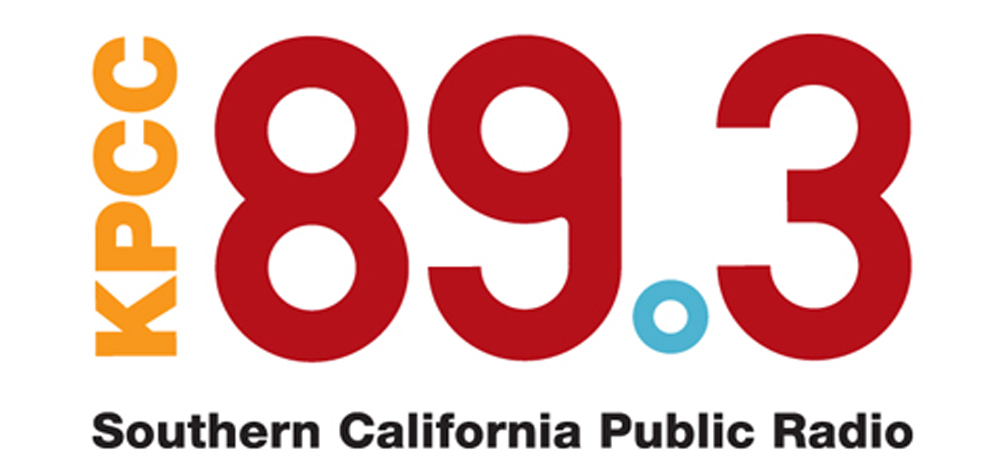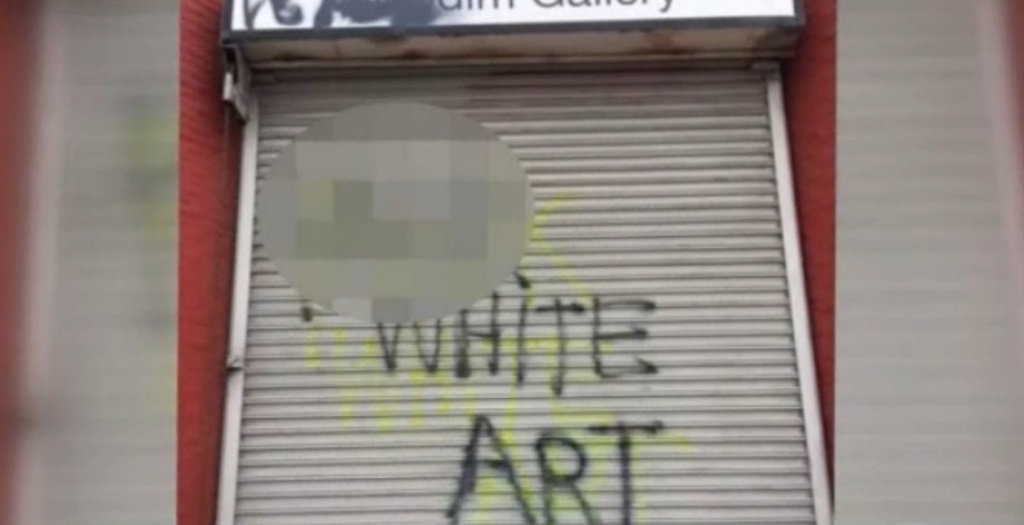On Boyle Heights, art galleries, changing neighborhoods and rising rents


Courtesy of NBC LA. Vandalized garage door of Nicodim Gallery in Boyle Heights, with the words “expletive” white art spray painted on.
The Los Angeles Police Department launched an investigation into three instances of vandalism targeting art galleries in Boyle Heights — including graffiti that read “f— white art†on one gallery — as  potential hate crimes, as longstanding concerns  over gentrification in the neighborhood heat up.
Tension between longtime Boyle Heights residents and newcomers has been brewing as artists, homebuyers and renters —many priced out of places like downtown, Echo Park and Silver Lake — look for more affordable housing options in the mostly Latino neighborhood.
In the last several years, a number of art galleries have opened up in Boyle Heights, raising concern from some residents and anti-gentrification activists who are calling on the galleries to leave and fear that the neighborhood is being “art-washed.†The term refers to artists who in seeking cheaper digs inadvertently pave the way for the gentrification of a neighborhood.
You can read the Statement on the LAPD investigation from Defend Boyle Heights, an anti-gentrification group, here.
AirTalk’s Larry Mantle talked to Eva Chimento, owner of Chimento Contemporary gallery in Boyle Heights, Elizabeth Blaney, Co-Executive Director of Union De Vecinos and Alessandro Negrete, Civic Engagement and Events Chair with the Boyle Heights Neighborhood Council, as well as listeners to get their perspectives on recent events and their implications for Boyle Heights.
You can hear the full interview by clicking the full playhead above. Below are several edited outtakes from the discussion.
Interview highlights
ON THE IMPACT OF ART GALLERIES ON COMMUNITIES
Blaney: There have been studies after studies… that have shown that galleries coming into communities do cause gentrification and do cause displacement, because of what they bring. Not the art, but because of who they attract and the businesses that tend to serve the needs of future incoming residents and not the needs in this community […] The galleries say that they’re bringing art … and that’s their investment in the community. But that is not what the community is asking for… if the community is saying that we need basic services like child care and laundromats and places for youth and places for seniors, that’s their role, Â is to live that up… what they’re bringing is displacement, not investment.
Chimento: I own a business. I’m in the back of a tiny little building, I’m a single mother making it all myself because I adore and love the artists who grew up in this community. There are other businesses in this building … Why is it that the art galleries are told to leave an area that is an industrially zoned area? There was never to be housing slated in this neighborhood… The children who come to visit me after school during the week because their parents are working and they want a place to hang out, they live in this neighborhood. So I’m providing something for them that they’re seeking.
ON WHETHER THE ‘F— WHITE ART’ GRAFFITI CONSTITUTES A HATE CRIME
Josefina in Silver Lake: Â There were housing covenants that prevented minorities from living [in Los Angeles]. That’s why Mexican Americans, Jewish people, Italian people had to live in Boyle Heights. It has a rich history so we’re really afraid that people are going to come who are thinking of Boyle Heights as a blank canvas and will paint all over it… This is vandalism, not a hate crime. I would hate for people to run with the narrative that it’s a hate crime, because then we’re saying the galleries are the victims.
Hector in Boyle Heights: What we’re seeing with all of the disruption and protest and these unsavory demonstrations that folks are using to get the attention of policymakers and people like yourself. These are the tools of working class communities and people who feel like they’re backs are against the wall and things like gentrification, we need to call it what it really is — economic violence.
ON THE CHANGING DEMOGRAPHICS IN BOYLE HEIGHTS AND WHERE TO GO FROM HERE
John in Boyle Heights: Progress is good… if it helps rid the neighborhood of gangs, of graffiti and everything else that comes with it…[I’ve lived in Boyle Heights for] 63 years … I don’t know if your on air guests have lived there that long, but they haven’t had to put up with a car break-in, they haven’t had to put up with getting jumped on the corner… they haven’t had to put up with the intimidation and the gangs.
Ulysses in Boyle Heights: We need to find a balanced approach to preserve the culture and the people that are part of the community of Boyle heights while also creating opportunities to strengthen and enrich it… rather than looking at art as a problem we need to find ways to empower our youth, find ways to get education to our youth and our communities… and create opportunities for people to become vibrant stakeholders in the community.
Guests:
Eva Chimento, owner of Chimento Contemporary, a gallery in Boyle Heights
Alessandro Negrete, Civic Engagement and Events Chair with theBoyle Heights Neighborhood Council. Negrete has lived in Boyle Heights since 1991
Elizabeth Blaney, Co-Executive Director of Union De Vecinos, a neighborhood and economic justice organization in Boyle Heights
